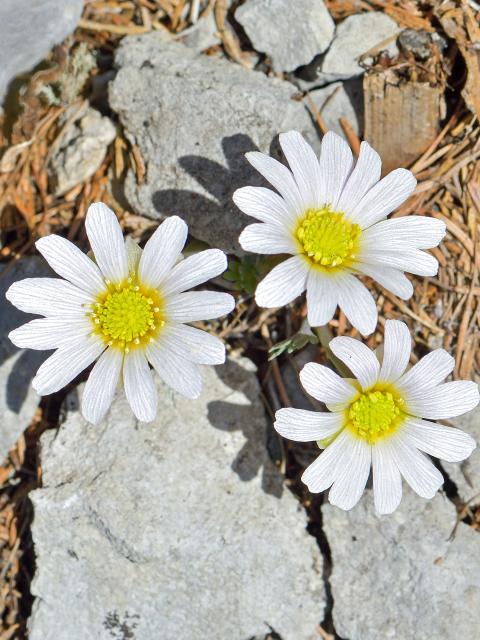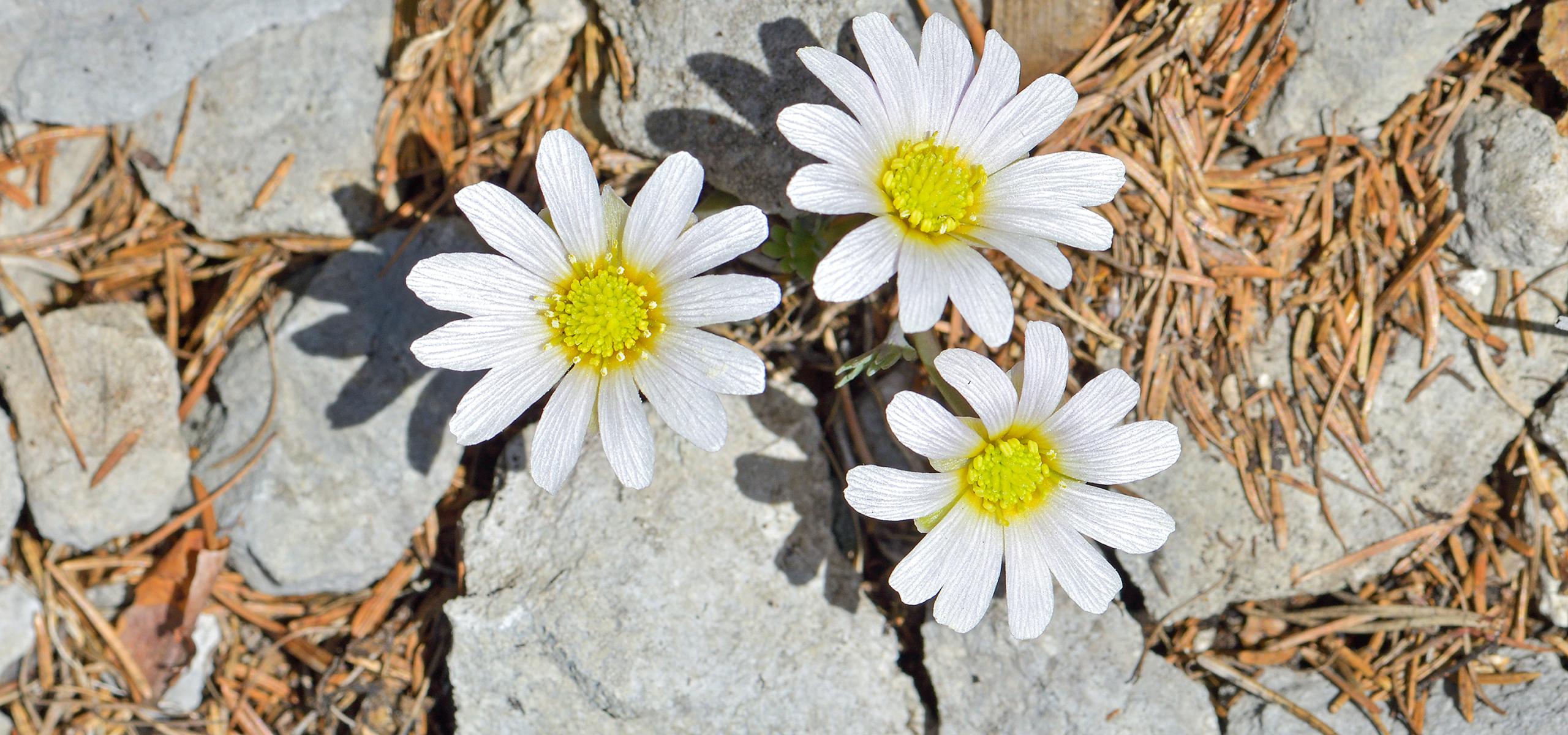Endemics and subendemics
Around 30 endemic species and subspecies occur in the north-eastern Limestone Alps. Of these, 21 species occur in Upper Austria. In the area of Kalkalpen National Park , 14 Northeastern Alps endemics (subendemics and endemics) were identified in the course of biotope mapping. Some of the endemics, such as the black margined daisy, the Traunsee bedstraw or the Austrian spurge, are quite common in the national park, while others have only been detected sporadically.

Endemic occurrences and their frequency:
German name |
Scientific name |
Frequency / number of biotope areas |
| Eastern Alps yarrow (endemic) | Achillea clusiana | 26 |
| Ennstal silver mantle (endemic) | Alchemilla anisiaca | 182 |
| Anemone ornamental flower (endemic | Callianthemum anemonoides | 75 |
| Dark bellflower (endemic) | Campanula pulla | 101 |
| Eastern Alps carnation (endemic) | Dianthus alpinus | 40 |
| Star-haired rock flower (endemic) | Draba stellata | 10 |
| Austrian spurge (endemic) | Euphorbia austriaca | 235 |
| Traunsee bedstraw (subendemic) | Galium truniacum | 245 |
| Black margined daisy (endemic) | Leucanthemum atratum | 339 |
| Alpine pursewort (endemic) | Thlaspi alpestre | 74 |
| Northeast alpine poppy (endemic) | Papaver alpinum alpinum s.str. | 7 |
| Clusius primrose (subendemic) | Primula clusiana | 229 |
| Kerner lungwort (endemic) | Pulmonaria kerneri | 229 |
| Austrian alpine bluebell (subendemic) | Soldanella austriaca | 129 |





